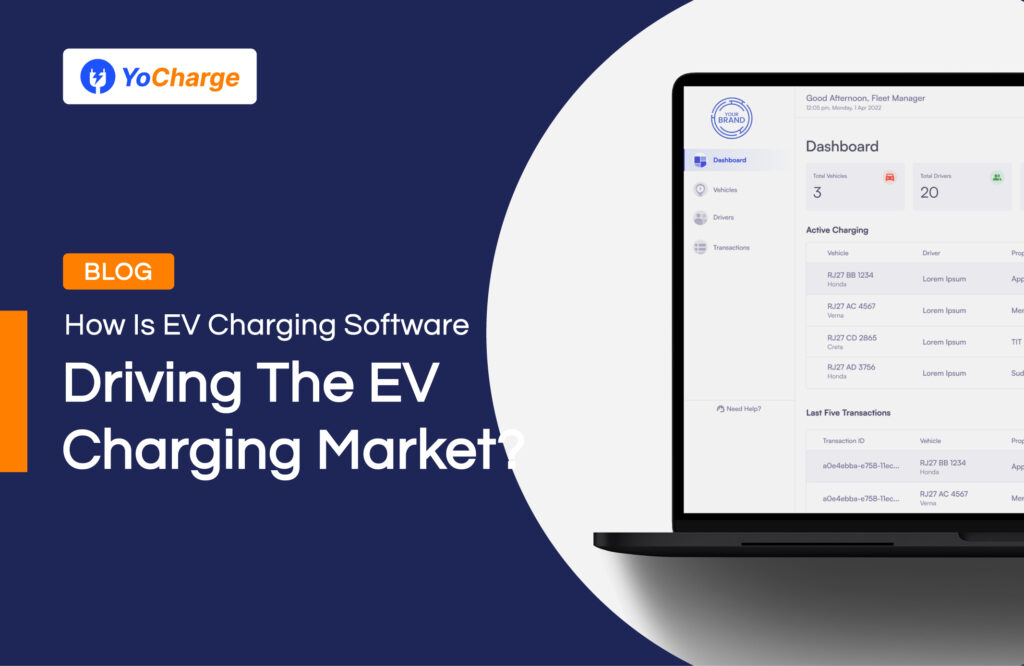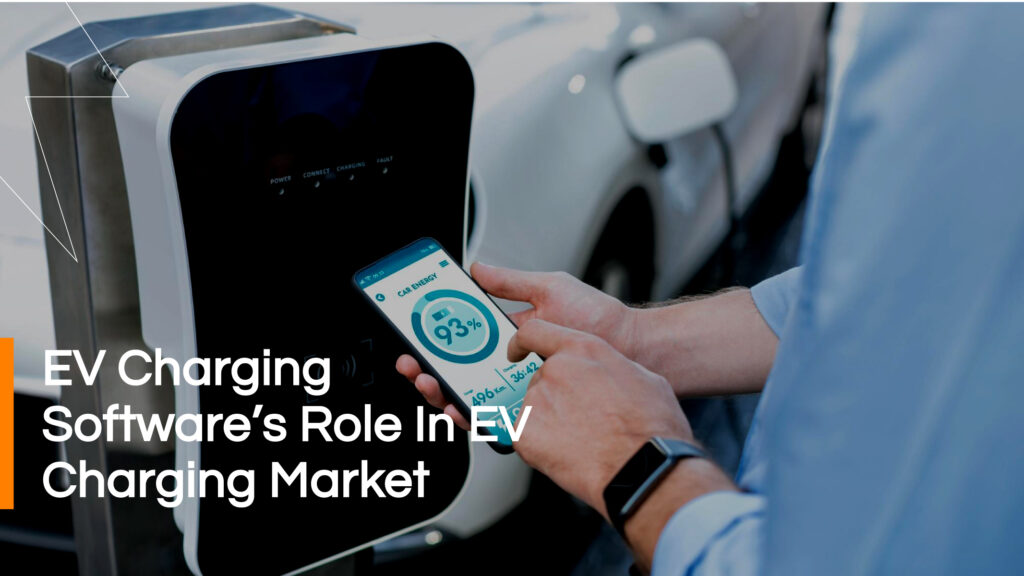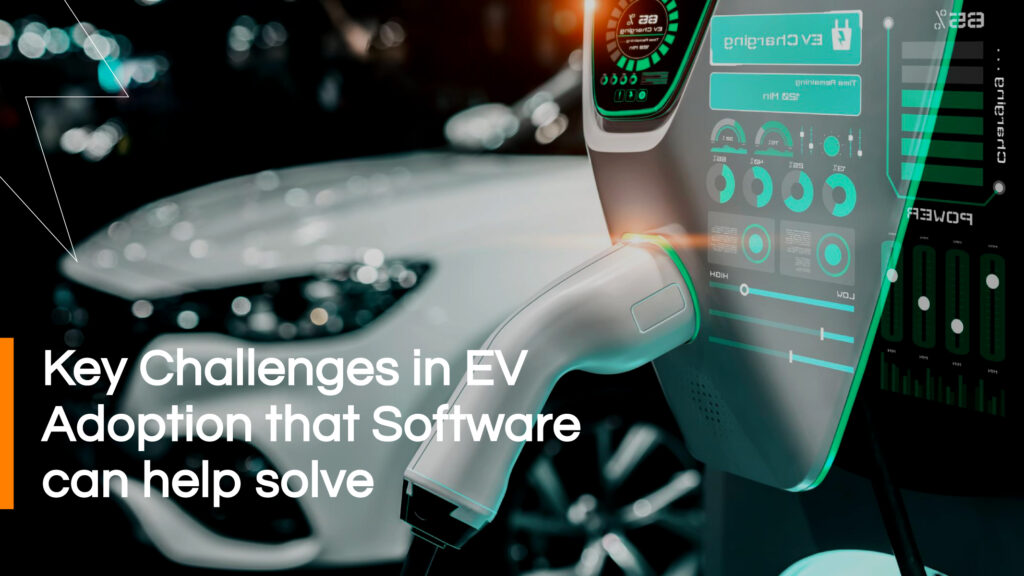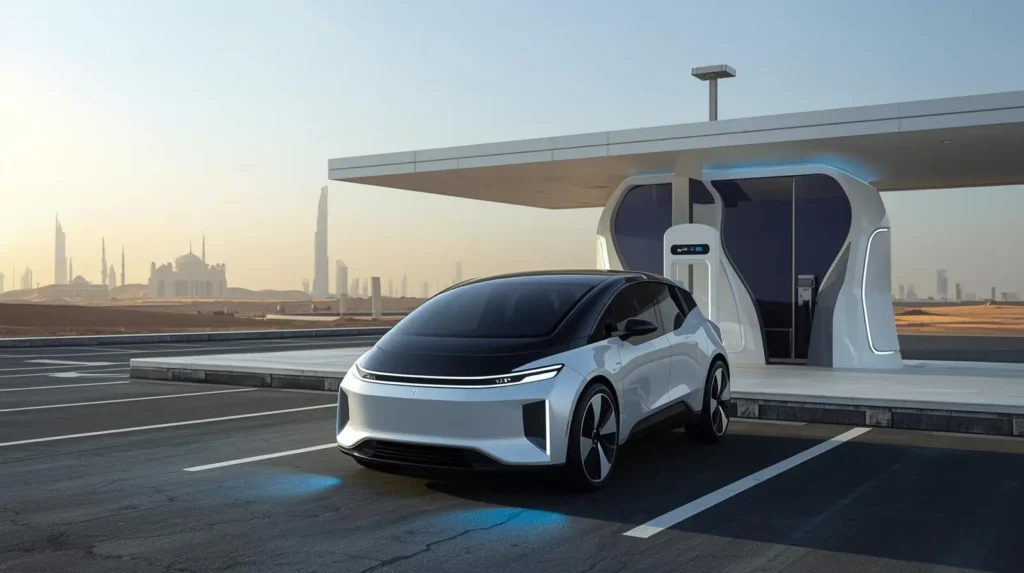
EV Charging Software’s Role In EV Charging Market

As we all know, the EV charging market is evolving rapidly, and as it does, the software is playing an increasingly important role in driving its growth. EV charging software is a set of digital tools that enable the management of EV charging infrastructure. It includes applications for managing charging stations, billing and payment systems, and data analytics platforms that can provide insights into charging patterns and usage.
Electric vehicle charging software simplifies the process for EV users to find charging stations, access them, and pay for charging services. It also helps charging station operators manage their infrastructure efficiently, monitor usage, and optimise performance. Electric vehicle charging software is typically cloud-based, which means it is accessible remotely from any device with an internet connection.
Key Challenges in EV Adoption that Software can help solve

While the EV charging market is growth is impressive, some key challenges still need addressing. These include range anxiety, lack of charging infrastructure, and the high price of EVs compared to traditional combustion engine vehicles. The software can solve some of these challenges by providing solutions that make EV ownership more convenient and affordable.
EVs can potentially revolutionise the transportation industry, but their widespread adoption faces several critical challenges. Firstly, Insufficient EV charging infrastructure causes range anxiety and journey planning issues. Interoperability problems arise due to varying protocols and standards for device management, transaction handling, security, and smart charging. Collaboration among stakeholders is crucial to enhance compatibility. Protocols like OCPP and ISO 15118 need ongoing co-development for seamless integration and interoperability.
Secondly, EV charging hardware costs remain high, with operational expenses further driving up the prices. EV charging hardware remains expensive, with the cost of a charging station varying significantly by type. Level 2 charging stations, which are typical home chargers, can cost up to $2,000, including installation costs, while level 3 charging stations intended for public and commercial networks can cost between $10,000 and $40,000. Soft costs like complex permitting processes, lagged communication between utilities and providers, and high maintenance costs for outdoor chargers further add to operational costs.
Lastly, e-fueling remains more complex and time-consuming compared to gasoline refuelling. Charging times at different stations can vary, with some offering a complete charge within an hour or an 80% charge in just 20 minutes. However, certain stations may require several hours for a full charge. Overnight charging is typically an option, but the duration needed can differ based on the specific vehicle model and type of charging station. The cost of charging also fluctuates based on factors such as the vehicle’s type, location, the charging station utilised, and any additional fees that may apply. These challenges must be addressed through continuous co-development between all stakeholders to enable the smooth transition to sustainable transportation powered by EVs.
EV Charging Software Will Become the Key Enabler of EV Scaling
As the adoption of EVs increases, maintaining the infrastructure becomes crucial. While EV charger monitoring exists, the concept of smart, “self-healing” chargers is still in the process of complete adoption. However, this capability is likely to be driven by software, as demonstrated by smartphones that learn from daily charging habits to improve battery life. Driivz and other companies claim they can already address up to 80% of operational problems related to EV chargers remotely through automated self-healing algorithms. This means issues with EV infrastructure are diagnosable and fixed proactively, even remotely, maximising network availability and stability.
From the user’s perspective, EVs require much more frequent charging than gasoline vehicles, with up to 500 or more charging sessions per year. This presents an opportunity for software to optimise the charging sessions and offer additional services to users, leading to the emergence of super-apps from the electric vehicle charging software sector.
Moreover, EV charging software will be critical to the transition towards renewable energies. By 2030, there could be 140-240 million electric vehicles globally, with an aggregated storage capacity of 7TWh. This energy storage capacity will be crucial to support renewable energy generation using vehicle-to-grid (V2G) technology. With the increase of V2G protocols development, the software will play a crucial role in harmonising the different standards and protocols.
Additionally, the routine maintenance of EV infrastructure will become crucial as EV adoption scales. Self-healing EV chargers, enabled by software-led solutions, will be pivotal in this aspect. Some companies claim that they are capable of addressing up to 80% of operational problems related to EV chargers remotely. By leveraging automated self-healing algorithms, issues with EV infrastructure can be diagnosable and fixed proactively, maximising network availability and stability.
Conclusion
EV charging software provides various benefits to EV users and charging station operators, including convenience, efficiency, and cost-effectiveness. As the demand for EVs continues to grow, the importance of EV charging software in enabling the scaling of EV infrastructure will only continue to increase. By choosing the right software solutions, the transition to sustainable transportation powered by EVs can be made smoother, more efficient, and more accessible for everyone. If you wish to learning more about EV charging software, visit yocharge.com



